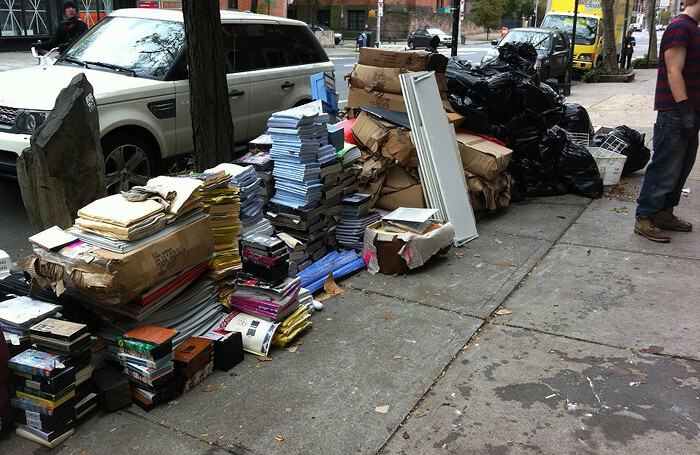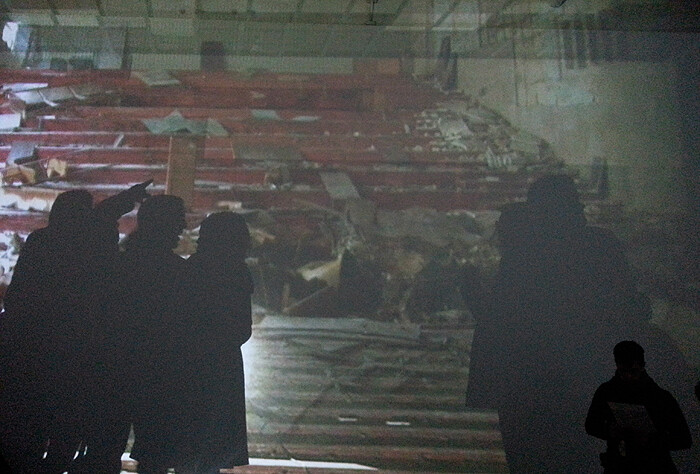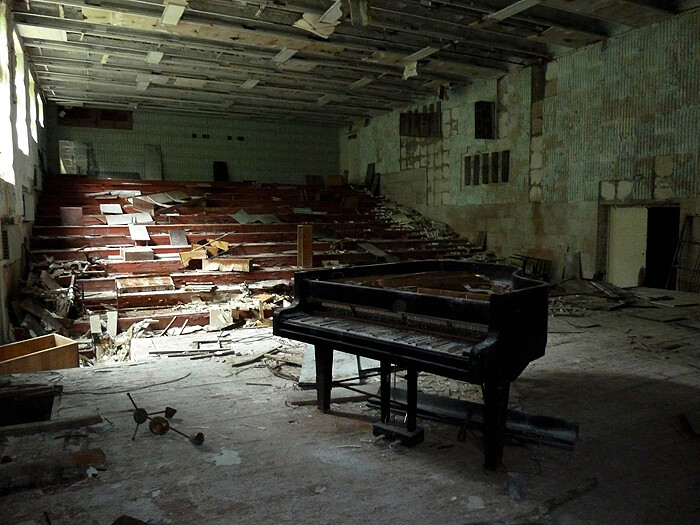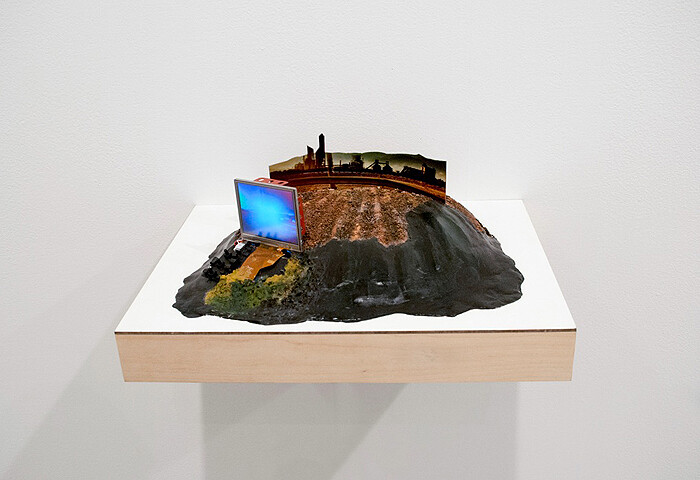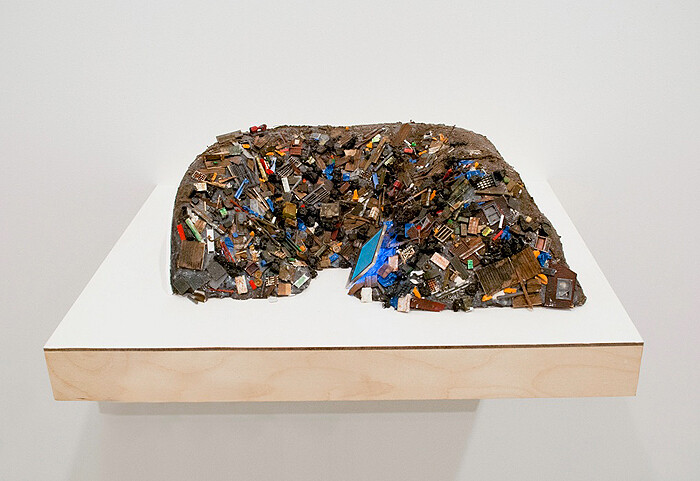From houses scorched to the earth in Breezy Point, Queens, to homes completely swept away in Staten Island, when it came ashore late last month Hurricane Sandy wreaked unprecedented havoc on life as we know it in New York City. The storm cut off power for nearly a million New Yorkers, and tens of thousands remained without electricity, heat, or water for ten days or more. Artists, whose studios and galleries are disproportionately situated in coastal areas of Brooklyn and Manhattan like Red Hook, Dumbo, Greenpoint, Chelsea, the Lower East Side, and the East Village, have been among the hardest hit.
Two weeks after the storm, a besieged Chelsea art district is slowly coming to grips with the hurricane’s immense personal and economic impact, in artworks ruined and high-season sales foregone. To put a figure on the losses is, for now, a futile exercise. The neighborhood’s largest art insurance company, AXA, has received $40 million in claims from its clients, but many galleries were not insured by AXA—or at all—and even among those that were, the above sum does not even include equipment and infrastructure damage. If there is good news for the area west of Tenth Avenue, between 19th and 27th Streets, it is that the community has united in mutual support, as they recuperate art from drowned basements, share supplies, and publicize one another’s needs; yet even such widespread generosity may not be enough to salvage waterlogged works or keep Chelsea’s smaller galleries from going under. There is no telling what the terrain will look like a year from now.
By the time I visited the neighborhood last weekend, there were reassuring signs of recovery amid the numerous dumpsters filled to the brim with cardboard, plaster, and assorted waste. Printed Matter, the beloved artists’ bookstore, lost 9,000 books and tens of thousands of pamphlets in its flooded basement, yet was open after ten days devoted to assessing the damage and cleaning up. Andrew Kreps, whose inventory was almost entirely ruined, reopened his 22nd Street gallery with a subtly subversive show addressing censorship and culture wars by Polish artist Goshka Macuga. On Friday night, people flocked to the severely hit David Zwirner, which was forced to postpone its Francis Alÿs and Luc Tuymans shows, but used its easternmost space to open an eerily apposite exhibition one month early: “Chernobyl” by video-artist pioneer Diana Thater.
Thater’s 2011 video installation, filling the exhibition space with moving images of the abandoned buildings and forestation of the 30-kilometer-wide “zone of alienation” that surrounds the site of the 1986 Chernobyl nuclear disaster, poignantly illustrates nature’s fraught coexistence with the most advanced landmarks of civilization. The spectacle of an analogous catastrophe, both more extreme and more manifestly human-caused than the recent superstorm, offered a classically cathartic experience for an overwhelmed crowd consisting largely of artists and gallery workers. With six projectors beaming a haunted landscape onto the hexagonal walls erected for this show—catching the silhouettes of spectators along the light’s path—a region rendered uninhabitable by radioactivity came much closer to home. Particularly uncanny was the resemblance of Chelsea’s ground-level galleries after the floods to the image of a music classroom in Chernobyl cluttered by waste. But perhaps it was the sense of stillness that most vividly connected the two distant sites and situations.
Disasters stall time, or more precisely, instill new perceptions of its unfolding. Much like art, catastrophes engender a state of suspension where new forms of questioning emerge; this is the provocative truth at the heart of composer Karlheinz Stockhausen’s notorious comments likening the September 11 attacks to a work of art. Thater’s Chernobyl, focused on a zone where humans will not be able to live for a sublimely unimaginable 20,000 years (if indeed our species is around then), transforms David Zwirner’s space into a cave for reflection about our social horizons. In doing so, it first implicates the chronological assumptions that inform projections of an uncertain future—be they alarmist predictions of imminent societal collapse or cynical calculations that things will remain, indefinitely, the same.
Life goes on in the zone of alienation, if not human life. In Thater’s video, wild horses run through grassy fields and birds perch on wires. It is autumn. Seasons change, but time has stopped for Chernobyl and nearby Prypiat, a city originally constructed as a home for the power plant workers, now abandoned. There are no clocks, and, by default, no time “on the clock.” Mechanical time and capitalist time—which links workers’ wages to hours—have given over to natural time, a phenomenon experienced to varying degrees by New York’s art professionals as Sandy not only disrupted schedules, but fundamentally altered the artificial, yet naturalized equation of time and money.
Up the street from David Zwirner, east of The Kitchen’s tragically battered performance space, Postmasters is exhibiting work by the new-media artist couple Jennifer and Kevin McCoy. On view since before the storm hit, it is similarly pertinent to both the confluence of natural and man-made destruction and societal constructions of time. Titling their show “Twenty One Twelve,” the McCoys not only document the present’s obsession with an ancient prophecy denoting 2012 as the year of the apocalypse, but also look a century forward, beyond the alleged “end times.” They capitalize on this Hollywood-ready framework to fabricate alternative scenarios to the dystopian environments offered by blockbusters set in an anxiety-laden future. In several miniature, diorama-like sculptures, the artists place mini-LCD screens amongst heaps of waste, allowing impressive-looking communication towers and luxurious resorts to coexist with dumps.
If this divide in ecological and economic realities, between rich and poor, geographically vulnerable and strategically placed, is already familiar from both everyday life and artistic reflections outside Hollywood, the shift in scale enacted by the McCoys provided a spatial remove similar to Thater’s temporal enlargement. In the backroom, accompanying two further McCoy installations, lay damaged works from Postmasters’ archives—an early digital art show called “Can You Digit?” Sprawled out to dry, these unintended appendages to the McCoys’ part-virtual, part-material landscapes lent pathos to the indispensable yet unstable condition of art, a seemingly endless resource of zeros and ones that is nonetheless vulnerable in our era of catastrophic climate change.
